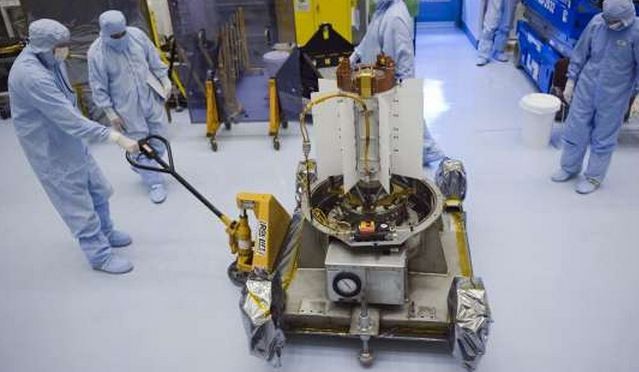The supply of Plutonium-238 (Pu-238), the only available fuel capable of powering all of NASA's deep space missions, is running low and could endanger future missions to Mars.
NASA estimates it only has 77 pounds (35 kilograms) of Pu-238 available for use in future deep space missions. Unfortunately, NASA has another problem: only 37 pounds (17 kilograms) of that supply is of a high-enough quality for use as a nuclear fuel. Pu-238 is a radioactive isotope of plutonium.
NASA reported that its supply of Pu-238 is only sufficient to produce three more Multi-Mission Radioisotope Thermoelectric Generators or MMRTGs.
An MMRTG is a type of Radioisotope Thermoelectric Generator developed for NASA space missions such as the Mars Science Laboratory and the Mars Curiosity Rover. It's basically a nuclear battery that reliably converts heat into electricity. These generators convert the heat from the natural decay of Pu-238 into electricity.
NASA intends to use one of the three MMRTGs to power the Mars 2020 mission. The other two nuclear batteries haven't been earmarked for any mission as of yet, said Popular Science.
Jim Adams, deputy director of planetary science at NASA, said there's enough Pu-238 for NASA missions until around 2022. He says if NASA doesn't get more after that, "then we won't go beyond Mars anymore. We won't be exploring the solar system beyond Mars and the asteroid belt".
The United States stopped producing bulk Pu-238 in 1988. Since 1993, all of the Pu-238 used in American spacecraft has been bought from Russia. In total, 16.5 kilograms have been purchased but Russia no longer produces Pu-238.
In 2009, the U.S. Department of Energy (DOE) requested funding to restart American domestic production for NASA planetary robots. DOE has just restarted domestic production of Pu-238 but making it in large enough quantities for the space program is a huge challenge.
It should take at least five years to get enough Pu-238 for a single spacecraft mission.
Since the DOE will produce the Pu-238 for NASA, the two agencies want to split the cost of restarting production. In 2013, however, it was agreed that NASA would provide all funding for the production of Pu-238.
Some 3.3 pounds (1.5 kg) and 4.4 pounds (2.0 kg) will be produced per year to support NASA's robotic science missions.




























